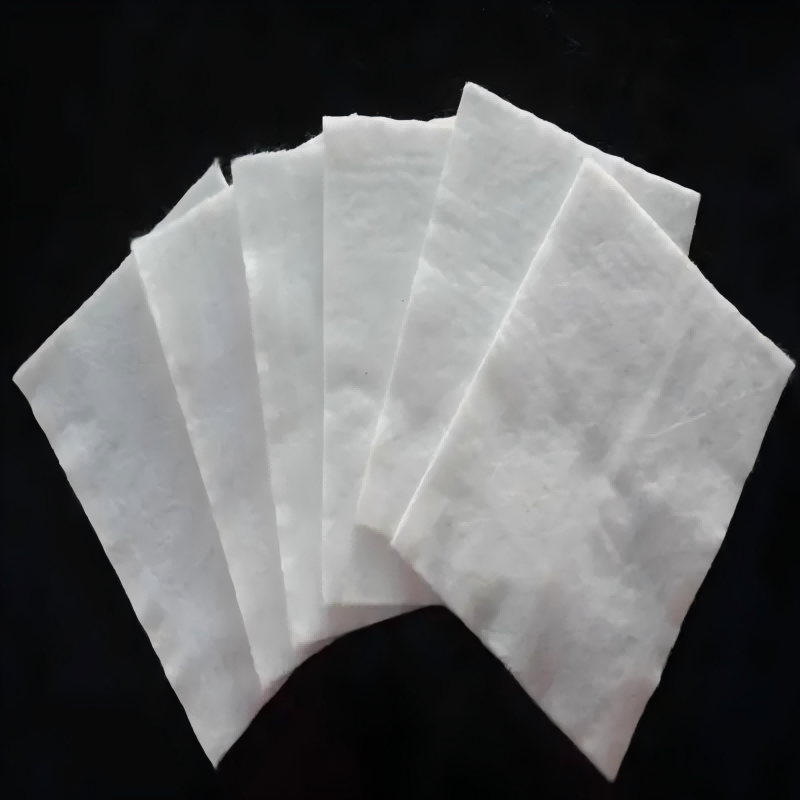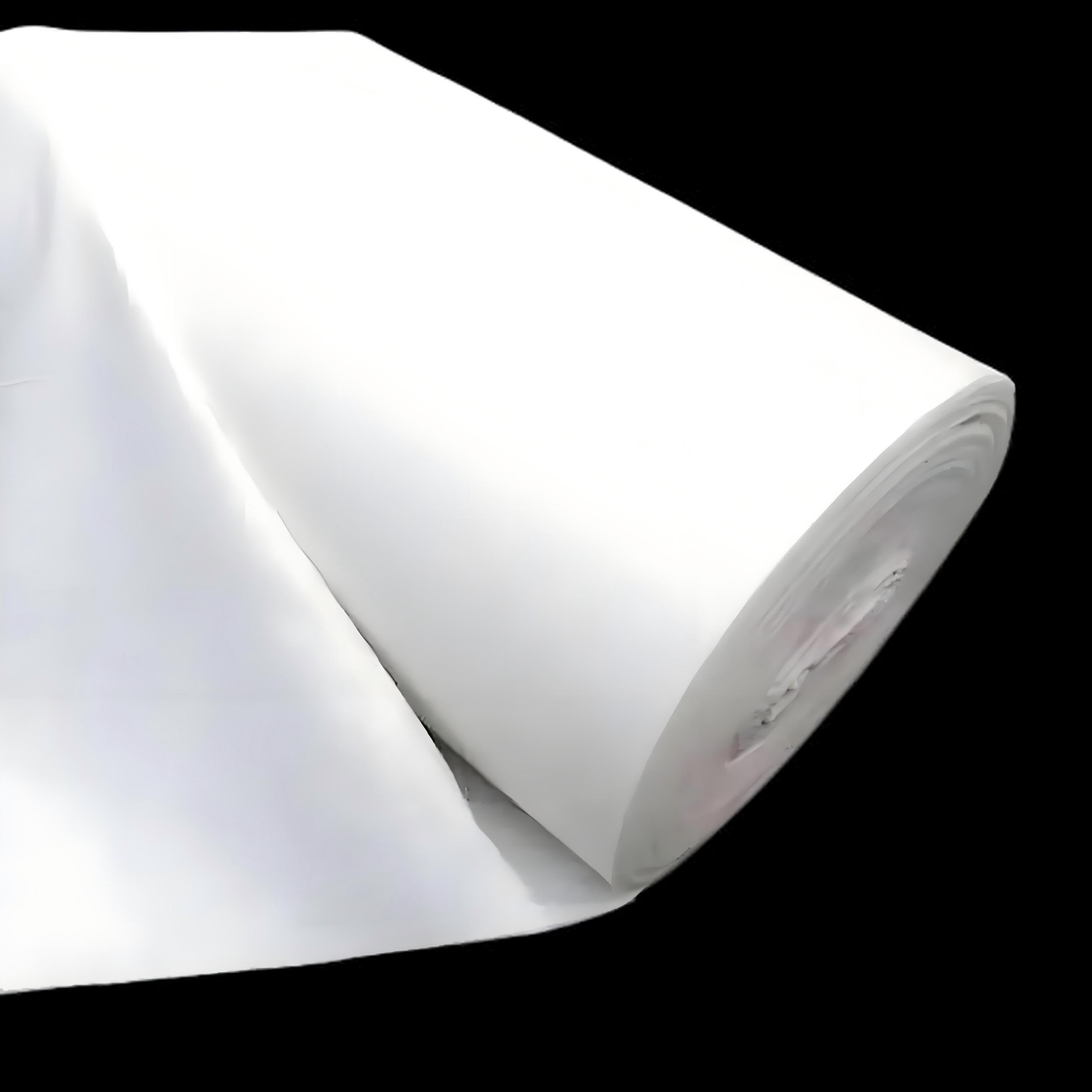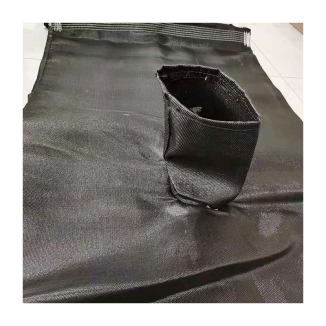Geotextile Weed Mat
1.Highly Effective Weed Suppression: Blocks light and prevents root penetration, inhibiting weed growth with minimal labor and no herbicides.
2.Water-Permeable and Soil-Retaining: Allows water to irrigate the ground while preventing rainwater from eroding the soil, protecting vegetation growth.
3.Durable and Damage-Resistant: Made of synthetic fiber, it's sun-resistant and age-resistant, ensuring long-lasting outdoor use with minimal replacement.
4.Easy to Use: Lightweight and easy to cut, suitable for gardens, farmland, and other environments, with some insulation features.
Product Introduction
I. Basic Properties
Material: Geotextile Weed Mat are made from synthetic fibers such as polypropylene and polyester, and are typically non-woven or woven. They are thin (typically 1-3mm) and lightweight (20-100g per square meter).
Format: They are commonly available in rolls, with widths ranging from 1 to 6 meters and can be cut to size. They often have fine pores on their surface, providing both light-blocking and breathable properties.
Environmental Protection: High-quality products are biodegradable (for specific types) or recyclable, leaving no chemical residue and harmless to soil and vegetation, meeting the needs of ecological farming.
II. Core Functions
Weed Suppression: They physically block weed photosynthesis by blocking sunlight, while their fiber structure prevents weed root penetration, reducing weed growth at the source and providing an alternative to chemical weed control.
Soil and Water Conservation: The pores allow rainwater and irrigation water to penetrate the soil, meeting plant water needs. They also trap soil particles, preventing rainwater from washing away soil and maintaining soil fertility. Environmental Adaptability: Covers the ground to regulate soil temperature (cooling in summer and retaining heat in winter), reducing soil evaporation and creating a stable growth environment for crops and vegetation.
III. Key Features
Low Maintenance: Resistant to sunlight, aging, and microbial attack, it boasts an outdoor lifespan of 3-5 years, eliminating the need for frequent replacement and reducing maintenance labor and costs.
Flexibility: The flexible material is easily cut to fit various terrains (e.g., between ridges in farmland, around garden pots, and on slopes), making it suitable for a variety of planting scenarios.
Safety and Friendly: Eliminates the need for herbicides, preventing chemical contamination of soil, water sources, and agricultural products, while also preventing accidental damage to crop roots caused by manual weeding.
Product Parameters
project | metric | ||||||||||
Nominal strength/(kN/m) | |||||||||||
6 | 9 | 12 | 18 | 24 | 30 | 36 | 48 | 54 | |||
1 | Longitudinal and transverse tensile strength / (kN/m) ≥ | 6 | 9 | 12 | 18 | 24 | 30 | 36 | 48 | 54 | |
2 | Maximum elongation at maximum load in longitudinal and transverse directions/% | 30~80 | |||||||||
3 | CBR top penetration strength /kN ≥ | 0.9 | 1.6 | 1.9 | 2.9 | 3.9 | 5.3 | 6.4 | 7.9 | 8.5 | |
4 | Longitudinal and transverse tearing strength /kN | 0.15 | 0.22 | 0.29 | 0.43 | 0.57 | 0.71 | 0.83 | 1.1 | 1.25 | |
5 | Equivalent aperture O.90(O95)/mm | 0.05~0.30 | |||||||||
6 | Vertical permeability coefficient/(cm/s) | K× (10-¹~10-), where K=1.0~9.9 | |||||||||
7 | Width deviation rate /% ≥ | -0.5 | |||||||||
8 | Unit area mass deviation rate /% ≥ | -5 | |||||||||
9 | Thickness deviation rate /% ≥ | -10 | |||||||||
10 | Thickness coefficient of variation (CV)/% ≤ | 10 | |||||||||
11 | Dynamic perforation | Puncture hole diameter/mm ≤ | 37 | 33 | 27 | 20 | 17 | 14 | 11 | 9 | 7 |
12 | Longitudinal and transverse fracture strength (grab method)/kN ≥ | 0.3 | 0.5 | 0.7 | 1.1 | 1.4 | 1.9 | 2.4 | 3 | 3.5 | |
13 | Ultraviolet resistance (Xenon arc lamp method) | Longitudinal and transverse strength retention rate% ≥ | 70 | ||||||||
14 | Ultraviolet resistance (fluorescence UV lamp method) | Longitudinal and transverse strength retention rate% ≥ | 80 | ||||||||
Product Application
I. Gardening and Landscape: Balancing Landscape and Maintenance Efficiency
Seedling Planting Areas: For trees and shrubs in nurseries, parks, and courtyards, leave 30-50cm of growing space around the trunks when laying the mulch. This not only inhibits the growth of weeds within a meter of their roots, preventing them from competing with the seedlings for nutrients like nitrogen, phosphorus, and potassium, but also reduces accidental damage to surface roots caused by hoes during manual weeding. Its permeability allows rainwater to quickly penetrate the roots, especially in rainy summer regions, preventing waterlogging and root rot, thereby extending the survival rate of seedlings.
Pots and Flower Borders: For use around the edges of home pots and flower borders at commercial flower shows, the mulch can be cut to fit the contours of the pots or flower borders, directly covering the soil surface. This prevents weeds from sprouting through the holes in the bottom of the pots or cracks in the soil of the flower border, maintaining a clean and tidy landscape. It also reduces soil evaporation, making it particularly suitable for plants that require controlled watering, such as succulents and roses, and reduces the frequency of daily watering.
II. Agricultural Planting: Supporting Green Planting and Increased Yields
Cash Crop Fields: Lay the fabric between rows of crops such as strawberries, blueberries, tomatoes, and peppers, with a width tailored to the row spacing (typically 0.8-1.2 meters). This fabric physically blocks weed photosynthesis by blocking weeds, reducing weed germination by over 90%, eliminating the need for herbicide spraying and ensuring chemical residue-free agricultural products. The fabric also prevents rainwater from eroding the fine soil between rows, maintaining a loose soil structure and reducing soil compaction. In arid areas, it can also reduce soil evaporation by 30%-40%, improving crop drought tolerance.
Orchard Management: Lay the fabric between rows of fruit trees in orchards such as apple, citrus, and grapes, covering exposed soil between rows. Besides suppressing weeds, it also regulates surface temperature—reducing surface soil temperature by 5-8°C in summer, preventing root damage from high temperatures; and retaining heat by 2-3°C in winter, reducing root damage from low temperatures. It also reduces the amount of labor required for orchard weeding, saving 800-1200 yuan per mu per year.
III. Landscape and Slope Protection Scenarios: Balancing Ecological and Structural Safety
Landscape Green Spaces: In urban road green belts, community green spaces, municipal park lawns, and other areas, the surface can be covered with a 2-3cm thick layer of bark chips, crushed stone, or expanded clay. This not only conceals the weed mat, enhancing the landscape aesthetics, but also further strengthens the weed control effect. The fabric also intercepts soil particles washed down by rainwater, preventing soil erosion in green spaces. It can effectively reduce soil loss by over 80% on gently sloping green spaces with slopes of 5°-15°.
Slope and Green Rooftops: In highway and railway slopes and green rooftop projects, it is used as a base layer for plantings. Choose a wear-resistant grade with a thickness of 1.5-2mm. For slopes, it can inhibit uncontrolled weed growth, which could damage the slope structure due to root damage, while ensuring water permeability in the planting layer, preventing rainwater from accumulating inside the slope and causing landslides. For green roofs, it can prevent weed roots from penetrating the roof's waterproofing layer, preventing leaks and reducing the need for maintenance.
IV. Other Practical Applications: Covering Various Outdoor Spaces
Patios and Terraces: The strips can be cut into narrow strips (10-20cm wide) and inserted into the cracks or around the edges of the planters to prevent weeds from growing through the cracks, eliminating the need for regular weed removal and maintaining a clean and beautiful patio or terrace. Greenhouses: When laid in greenhouse planting areas for crops like tomatoes, cucumbers, and lettuce, it not only suppresses weeds but also reduces soil evaporation and lowers humidity, thereby reducing the incidence of high-humidity diseases such as powdery mildew and downy mildew by 40%-50%. It also reduces energy consumption for ventilation and dehumidification, improving crop yields.
Geotextile weed control mats, with their core advantages of "weed suppression, soil conservation, water permeability, and strong adaptability," are widely used in gardening, agriculture, and landscape protection. They not only replace chemical herbicides for green planting and maintenance, but also reduce soil erosion, regulate the soil environment, and reduce labor costs and maintenance difficulties. They are a key material in modern outdoor planting and landscape management, combining ecological, economical, and practical benefits. They are suitable for a wide range of applications, from small-scale home planting to large-scale agricultural and municipal projects.












